Cloud Security Needs to be top priority with many businesses moving more towards cloud environments. There is no question that cloud technology has proven to be incredibly flexible, scalable, and cost-effective compared with simply owning a data center but it also poses its own unique security challenges. Why Monitoring Cloud Security is Important? To aid in the process of maintaining security, this article reviews some tools aimed at protecting and securing cloud environments.
Understanding Cloud Security Monitoring
Cloud Security Monitoring is the practice of monitoring a cloud environment for security issues and implementing security events that are designed to detect (and potentially respond) when someone or something tries to compromise your company’s infrastructure. That includes network security, data protection, identity & access management (IAM) and compliance. Because clouds consist of many disparate platforms and services, defiant to monitoring the complexity is high but necessary.
The Importance of Cloud Security Monitoring
Cloud security monitoring is particularly crucial given the increase in cyber threats. In this case, and by performing unsecure access control, organizations are liable to suffer from data thefts, unauthorized accesses as well non-compliance-related penalties issued out of industry regulations. These cloud security monitoring tools can bring visibility into the cloud environment and enable companies to quickly identify abnormalities, find vulnerabilities, and respond to incidents in a much shorter time.
Also Read: Top 5 Career Planning Tools You Need to Know About It
Best Tools for Monitoring Cloud Security
#1. AWS CloudTrail

Overview:
AWS CloudTrail is a service that records API calls for your AWS account and provides log files you can access. It logs API calls and sends log files to an S3 bucket, giving a complete record of AWS account activity.
Key Features:
Keep watching the API Calls and User Activity
Inclusion of other AWS services such as CloudWatch for immediate alerts
Comprehensive auditing logs for security analysis and compliance@PostMapping operations using the agent.flush__() method
Use Case:
If your organization is already committed to AWS, it should use CloudTrail for monitoring; CloudWatch metadata adds little value when you mostly run in Amazon’s cloud (keep S3 options enabled). User visibility into service activity and enhanced log details are paramount with user actions—if sensitive operations aren’t detected or monitored then even recorded access could go unseen—both of which might lead to compliance issues.
#2. Microsoft Azure Security Center

Overview:
Azure Security Center is the central security management platform for hybrid cloud workloads on-premises and in Azure. Provides security advice, real-time monitoring and automatic threat detection.
Key Features:
Unified security management across hybrid environments
AI and machine learning based advanced threat detection
Alignment with service management and security best practices
Use Case:
Azure Security Center comes with built-in security management and monitoring for all services running in Microsoft Azure, as well as threat detection that can identify active threats targeting your Azure resources.
#3. Google Cloud Security Command Center (SCC)
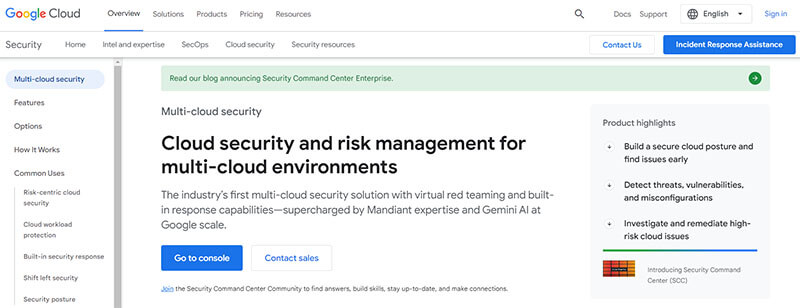
Overview:
Google Cloud Security Command Center (Cloud SCC) is a security and data risk platform facilitating in it for Google Cloud users. This gives you visibility into assets, vulnerabilities, and threats across Google Cloud services.
Key Features:
Unified security orchestration and threat awareness
Native integration with Google security services including Cloud Armor and Event Threat Detection
Discovery, inventory & asset management
Use Case:
SCC is a comprehensive platform for monitoring cloud security, managing the risks, and ensuring compliance with industry standards for organizations relying on Google Cloud.
#4. Palo Alto Networks Prisma Cloud
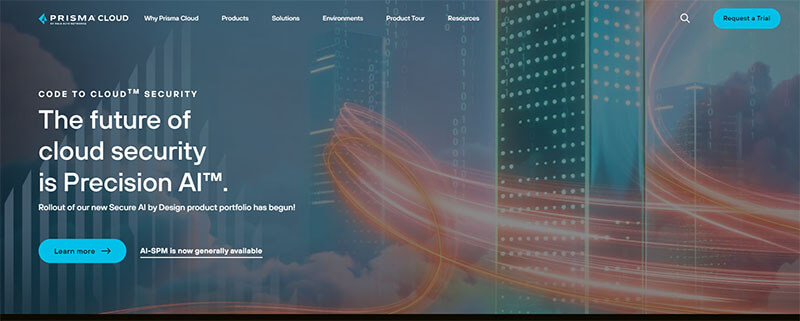
Overview:
Prisma Cloud by Palo Alto Networks is a multi-cloud security platform, which provides visibility, compliance, and threat prevention coverage across the full cloud-native stack. A comprehensive security model that includes workloads, applications, and networks.
Key Features:
Multi-cloud security management and compliance monitoring
Threat detection in real time and automated mitigation
With support for both containers and serverless as well, coverage is not limited to VMs.
Use Case:
Prisma Cloud is best suited for large organizations that have sprawling multi-cloud infrastructures, delivering robust security analytics alongside real-time compliance monitoring and powerful threat detection capabilities.
#5. Splunk

Overview:
Splunk, in simple word we can say that it is a software tool used for log analysing and monitoring. It provides visibility, insights, and automated-response pipelines for cloud environments – by unifying all security data into one place to enable faster detection/response of both traditional and modern cyber-attacks.
Key Features:
Monitoring and Alerting in Real Time
Threat detection enabled by advanced analytics and machine learning
Connection with almost all cloud providers and services
Use Case:
Splunk is best-suited to organizations that need a central tool for security data management, spanning the cloud and on-premises environments.
#6. Datadog Security Monitoring
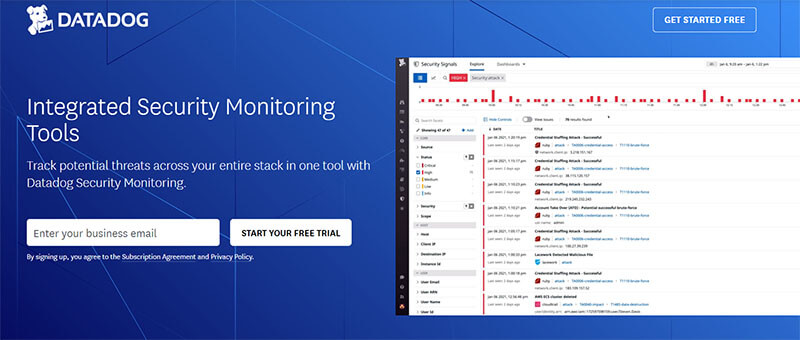
Overview:
Datadog is a monitoring and analytics platform for cloud infrastructure, applications, logs and security. The Security Monitoring module delivers persistent threat detection, security analytics, compliance monitoring.
Key Features:
Immediate Threat Detection and Reaction
Complete compatibility with the cloud and its services
Dashboard and customizable alerts built for security insights.
Use Case:
Datadog is suited for DevOps teams and companies requiring end-to-end, real-time monitoring of performance and security — all integrated in a single management platform.
#7. Trend Micro Cloud One
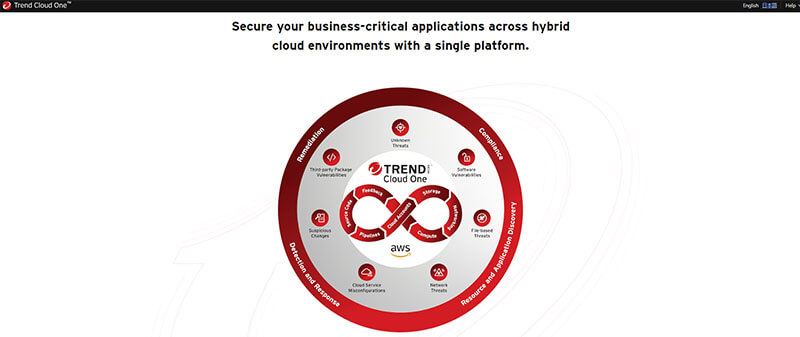
Overview:
Trend Micro Cloud One is a security services platform that delivers automated defence for cloud environments. In case of workload security, container security and file storage layer many tools are available.
Key Features:
Centralized security management for cloud workloads and containers
Configuration Assessment and Continuous Compliance
Integrates with AWS, Azure, Google Cloud and Kubernetes
Use Case:
Trend Micro Cloud One is good for those organizations looking to combine cloud security covering a range of different areas in the cloud infrastructure including workloads, containers and storage.
Also Read: 8 Strategies for Boosting Your Social Media Presence
#8. Qualys Cloud Security
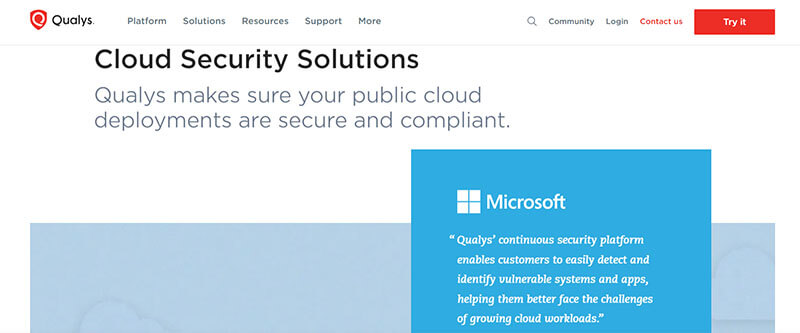
Overview:
Qualys Cloud Security provides a comprehensive view of security and compliance in public, private and hybrid cloud environments. Having tools that give insight into asset discovery, vulnerability management and compliance assessments.
Key Features:
Visibility and monitoring of cloud assets on a regular basis
Automatic vulnerability discovery and mitigation.
Reporting and compliance
Use Case:
Qualys Cloud Security is ideal for businesses looking to get deep insights into their cloud aassets with emphasis on vulnerability management and compliance.
#9. Snyk

Overview:
Snyk is a security platform focused on securing cloud-native applications by finding, fixing and preventing vulnerabilities in open-source libraries, containers and infrastructure as code (IaC).
Key Features:
Detection of vulnerabilities in code and dependencies based on automated voting
Seamless with CI/CD pipelines for securing the workflow
They should not only provide real-time monitoring but also remediation guidance.
Use Case:
Snyk is great for dev shops working in cloud-native settings, providing continuous security as part of the software development lifecycle (SDLC).
#10. CloudGuard by Check Point

Overview:
Check Point CloudGuard is a cloud security platform that delivers threat prevention, visibility, and compliance for virtually any scale multi-cloud environment. It secures networks, applications, and data in the cloud.
Key Features:
Integrate threat prevention and security management for automation.
Automated compliance and continuous monitoring.
Supported integration to major cloud platforms including AWS, Azure, and Google Cloud
Use Case:
Organizations that enable multi-cloud security on CloudGuard can maintain consistent protection and compliance visibility across any cloud environment.
Conclusion
Monitoring cloud security is essential to guard confidential information and to reduce the risk of non-compliance in an environment greatly dependent on a third-party service. These tools provide powerful monitoring, threat detection and compliance management across different public cloud environments as detailed above in the article.
When choosing a cloud security monitoring tool, an organization must consider your specific environment in the context of both which links will be optimal for them and integration. By utilizing the appropriate tools, an enterprise can accomplish full visibility and undertake precautionary threat management to take strong security stance in a cloud.
Cloud adoption will continue to ramp up and protecting cloud environments from emerging threats tops the list of business trust imperatives. And in all instances, investing in such tools should not only be best practice but is now essential to the well-being of any organization operating within cloud.
Next Post: Innovative Online Business Ideas That Will Disrupt the Market




One thought on “What Are the Best Tools for Monitoring Cloud Security?”
Comments are closed.